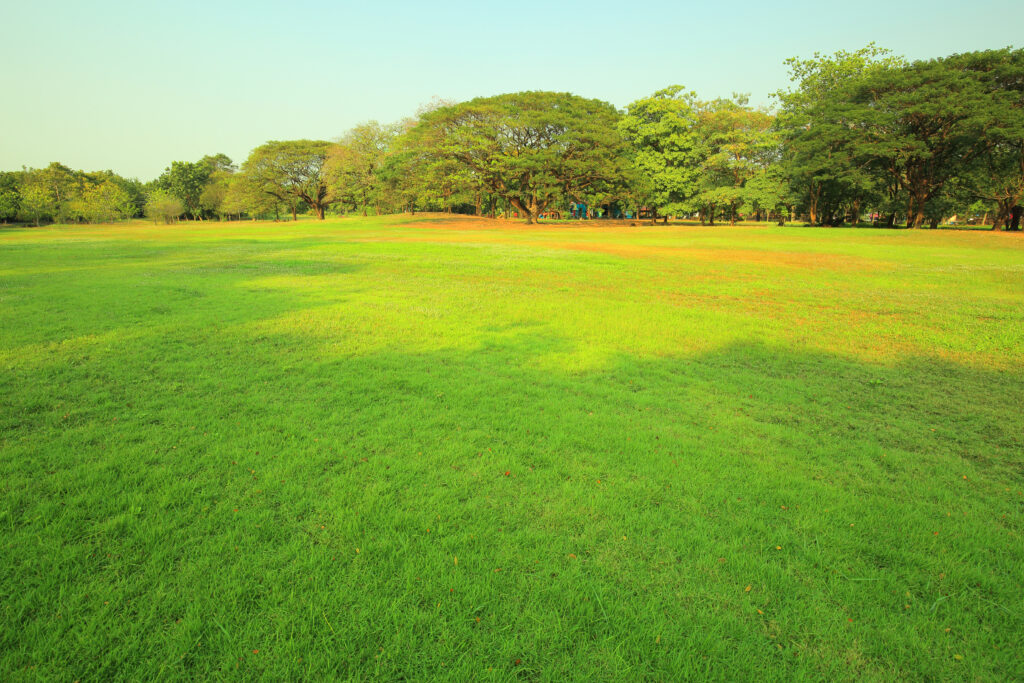Drought-Resistant Natural Lawn Grasses for a Green Yard
Maintaining a beautiful, green lawn can be difficult, particularly in places likely to experience drought or with restricted water supplies. Choosing Drought resistant natural lawn grass, however, can transform a yard. These grasses are meant to be robust all year long, demand less water, and resist dry weather. In this blog post, we’ll look at some of the most drought-resistant natural lawn grasses, their advantages, and ideas for maintaining a healthy, green yard even in the driest of conditions.
1. Why Select Natural Lawn Grasses Resistant to Drought?
Homeowners trying to cut water use and maintenance costs while keeping their lawns healthy and appealing would find it wise to use drought-resistant grasses. Here are some reasons you might choose drought-resistant grasses: These grasses are ideal for areas with water restrictions or regular droughts because they require far less than standard lawn grasses. Once established, drought-resistant grasses sometimes call for less fertilization, mowing, and pest management. Using drought-resistant grasses benefits local ecosystems, helps to conserve water, and lessens the necessity for chemical treatments. These grasses are durable and can withstand extreme temperatures and little rainfall without losing their rich appearance.

2. Top Natural Lawn Grasses Resistant to Drought
Here are some of the best natural grass choices for drought-prone areas:
A. Bermuda grass
Among the most often used options for Drought resistant natural lawn grass is Bermuda grass. This warm-season grass’s deep root systems help it obtain water kept far below ground. It can withstand protracted dry spells and recovers fast when water becomes accessible. Benefits include broad coverage, fast development, and great wear tolerance. Mow often to a height of 1-1.5 inches and water deeply but seldom to promote deep roots.
B. Zoysia Grass
Zoysia grass is another excellent drought-resistant option with dense growth and weed-choking ability. It is quite adaptable to different soil types, from sandy to clay, and thrives in hot regions. Benefits include low water and fertilizer requirements, high traffic tolerance, and resistance to diseases and pests. Mow to a height of one to two inches, and water only when the grass shows signs of stress. Overwatering could cause fungal problems.
C. Buffalo Grass
Buffalo grass, native to North America, is a low-growing, warm-season grass that requires minimal maintenance and has excellent drought tolerance. It is a perfect choice for low-maintenance lawns because of its smooth feel and fine texture. Benefits include shallow water needs, little mowing, and natural resistance to pests and diseases. Mow once or twice a year, then water seldom. Usually dormant during a severe drought, it comes alive fast with water.
D. Fescue Grass
Especially kids like tall fescue, fescue grasses are quite drought-tolerant cool-season grasses. Their thick root structure allows them to thrive in both sun and partial shade, as well as survive in hot, dry weather. Good shade tolerance, low water need, and adaptability for both cool and warm climates define benefits. To encourage deeper roots and improved drought resilience, mow to a height of 3–4 inches.

3. Advice on Keeping a Lawn Drought Resistant
Even with drought-resistant grasses, your lawn will only stay green and healthy with proper maintenance. These pointers will enable you to maximize your drought-resistant lawn: To encourage deep-root development, water wisely—deeply and rarely. Early morning watering is the most effective way to reduce evaporation. Raising your mower blades will allow the grass to grow longer. Taller grass reduces evaporation by shading the ground, encouraging deeper roots. Aeration helps to enhance soil structure, enabling water and nutrients to go deeper into the ground. This improves drought tolerance and stimulates more root development. Sparely fertilize. Too much growth brought on by overfertilization can need more water. Apply in moderation using slow-release, organic fertilizers. Leaving grass clippings on your lawn after mowing will help the soil naturally get nutrients and retain moisture.
4. Finally, embrace a lawn resistant to drought
For those who wish for a lovely yard without significant water consumption, switching to Drought resistant natural lawn grass is a wise, environmentally friendly option. Even in dry spells, you may have a green, healthy lawn if you select the correct grass variety and apply the correct lawn care techniques. Adopting drought-resistant grasses such as Bermuda, Zoysia, Buffalo, and Fescue not only lessens your environmental impact but also saves time, money, and effort in the upkeep of your lawn. Start designing your drought-resistant lawn right now and savor the advantages of a rich, green yard that will last! I recommend checking out:
- How to plant lawn grass: A Step-by-Step Guide
- Mowing Heights By Season And Grass Type
- What Is the Best Warm Season Grass for Your Lawn
- Natural Weed and Grass Killer Recipe for a Chemical-Free Lawn
- What type of machine is used to cut grass?
- 5 gorgeous flowering plants to bring home in summer
- 10 Stress Relieving Indoor plants for home
- 10 plants you can easily grow in a bottle
- 5 Easy Tips to Maintain a Tulsi Plant at Home
- 5 Medicinal Plants to Grow at Home
- 10 palm plants to grow at home
Last Updated on 1 year ago by Anjali Mehra Ph.D. in Horticulture (Punjab Agricultural University)
- Grass Varieties That Grow Well in Cold Mountain Soil - December 11, 2025
- Grass Types that Survive Frost & Snow (Uttarakhand-Specific) - December 6, 2025
- Low-Water Grass Varieties for Hilly Homes in Uttarakhand - December 1, 2025
